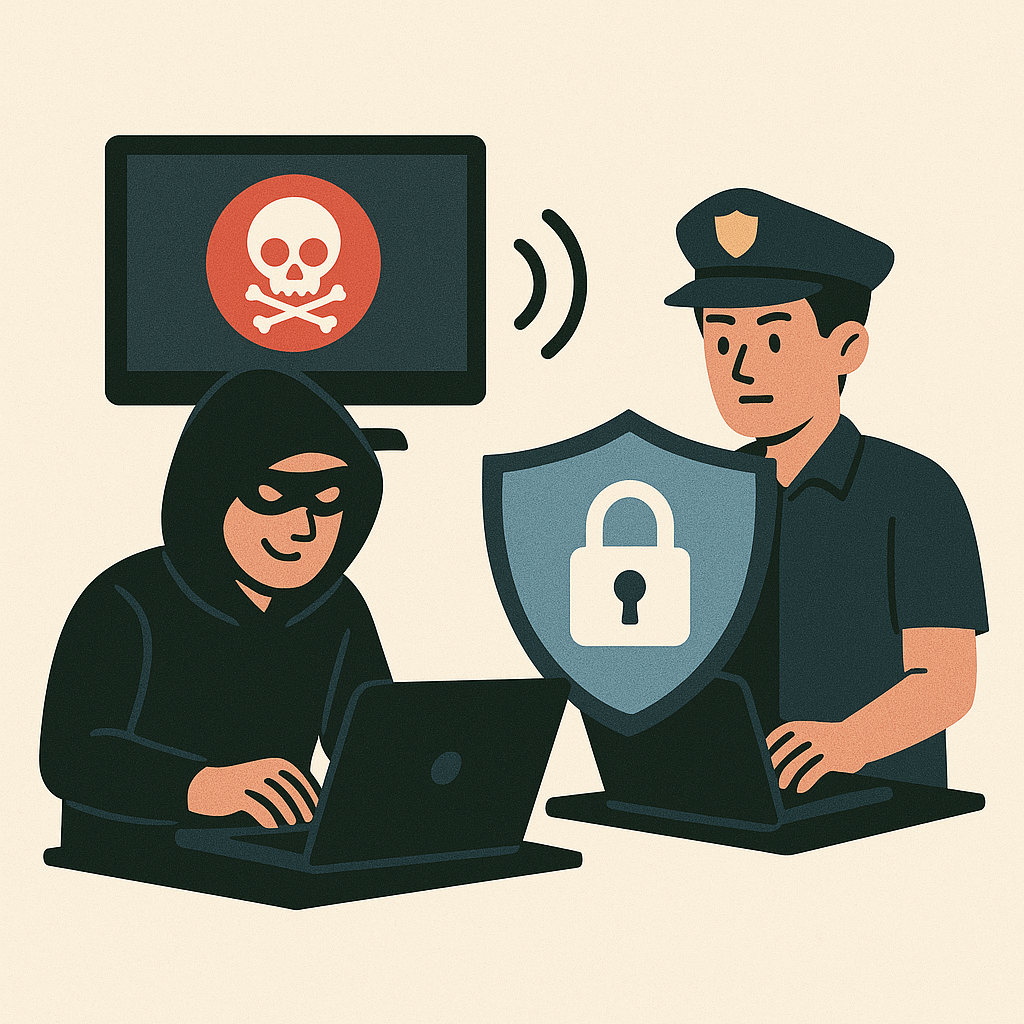Custodians of the Web Level 2 - Study Material
Overview
The Custodians of the Web course introduces students to advanced cybersecurity concepts through a mix of theory and hands-on practice.
Students will explore cyber threats, ethical hacking tools, digital security strategies, and gain real-world experience through practical activities.
What You Will Learn:
Advanced Cyber Security Concepts — Learn core cybersecurity principles and perform domain reconnaissance using Whois tools.
Understanding Cyber Threats and Attack Vectors — Explore types of threats and set up a cybersecurity virtual lab with Kali Linux.
Networking Basics for Cybersecurity — Understand IP addresses, DNS, protocols, and simulate a simple DDoS attack.
Operating Systems and Security — Compare Windows and Linux security and manage user permissions in Linux.
Password Security and Cracking — Study password protection techniques and crack weak passwords using tools like Hashcat.
Social Engineering and Phishing — Understand phishing attacks and create mock phishing emails to spot red flags.
Malware and Antivirus — Learn about different types of malware and create a simple keylogger using Python.
Web Application Security — Discover common web vulnerabilities and test for SQL injections using Burp Suite.
Wireless Network Security — Study Wi-Fi security protocols and perform Wi-Fi password cracking with Aircrack-ng.
Digital Forensics in Cybersecurity — Learn the basics of digital forensics and practice analyzing digital evidence.
Learning Outcomes:
By the end of this course, students will be able to understand cybersecurity principles, defend against cyber threats, use ethical hacking tools responsibly, and perform basic digital forensics.
Prerequisites:
Basic familiarity with computers and the internet.
A willingness to learn, experiment, and think critically.
Course Highlights:
Combination of theory and hands-on cybersecurity activities.
Real-world practice with professional security tools.
Creation of a controlled ethical hacking lab environment.
Theory: In-depth exploration of cyber security principles, key concepts, cyber threats and practices, Network scanning and reconnaissance.
Practical: Performing Reconnaissance using who is domain tools
Theory: Types of cyber threats,Common attack vectors, Real-world examples of cyberattacks.
Practical: Set up a virtual lab environment, VirtualBox, Kali Linux, Basic Linux Commands
Basics of IP addresses, DNS, and protocols (HTTP, HTTPS, FTP).Introduction to firewalls and VPNs.
Practical: Simulating a simple DDoS attack using tools like LOIC (Low Orbit Ion Cannon) in a controlled environment.
Windows vs. Linux security, User permissions and access control, Introduction to encryption.
Practical: Creating and manage user accounts with different permissions in Linux.
Importance of strong passwords, Password hashing and encryption, Common password-cracking techniques (e.g., brute force, dictionary attacks).
Practical: Using tools like hashcat/Jhon the ripper to crack weak passwords
What is social engineering?
Types of phishing attacks (email, SMS, voice).
How to identify and prevent phishing.
Practical : Creating a mock phishing email and spotting red flags.
Common vulnerabilities (e.g., SQL injection, XSS).
Secure coding practices.
Introduction to OWASP
Practical :Use tools like Burp Suite to test for SQL injection vulnerabilities in a demo web app.
Wi-Fi encryption protocols (WEP, WPA, WPA2).
Risks of public Wi-Fi.
Securing wireless networks.
Practical : Use tools like Aircrack-ng to demonstrate Wi-Fi password cracking (in a controlled environment).


.png)



